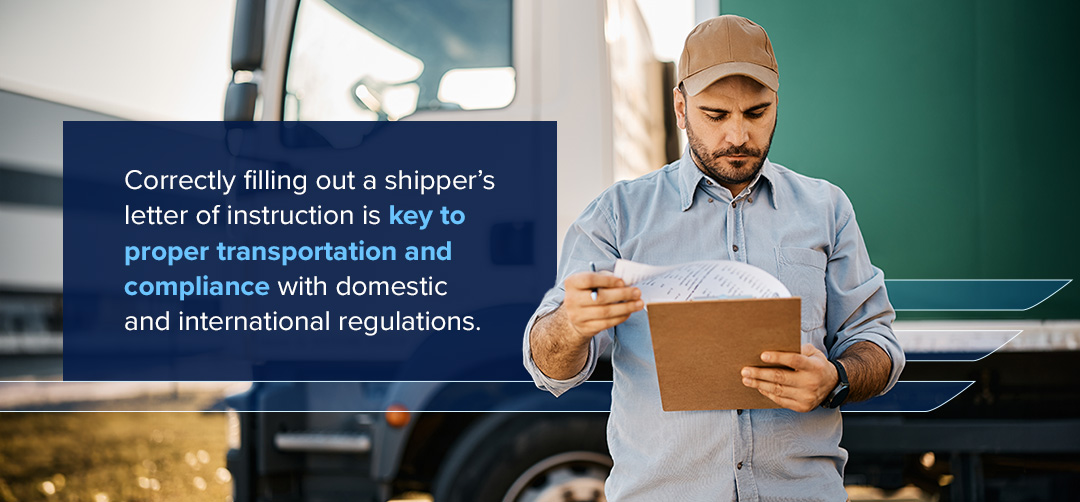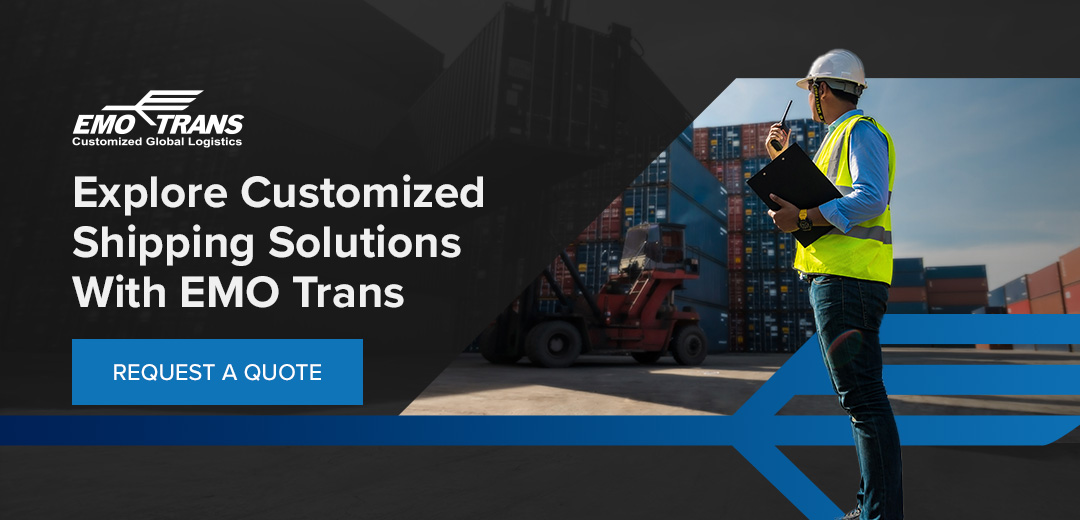
Logistics is a critical and complex part of the supply chain, as it involves moving goods from one point to another while filling out various paperwork and complying with multiple regulations. During that process, it’s easy for miscommunications and misunderstandings to occur. However, in logistics, mishaps due to left-out information can result in financial loss. That’s why a shipper’s letter of instruction (SLI) is crucial for all the parties involved. The document eliminates any room for misunderstandings and limited information, resulting in seamless operations.
What Is a Shipper’s Letter of Instruction?
A SLI is a document the exporter provides the freight forwarder that contains instructions on handling the export shipment. But there’s much more behind the definition of a shipper’s letter of instruction. With this letter, the shipper designates the freight forwarder as the authorized forwarding agent facilitating U.S. export and customs procedures.
Other functions of the SLI include:
- Helping the freight forwarder understand cargo weights and dimensions for proper handling and packaging.
- Providing the agent with the information required to enter export information into the automated export system (AES).
- Allowing the agent to prepare the bill of lading, a vital document in international shipping.
Since some countries consider the SLI a one-time power of attorney, it’s essential that the exporter accurately complete the document and exercise diligence with the freight forwarder.
Common Fields in an SLI
A shipper’s letter of instruction form has many fields that are essential to providing comprehensive information necessary for efficient shipping. Here are some of the key fields you can expect from an SLI:
- USPPI information: The U.S. Principal Party in Interest (USPPI) is the party in the United States that primarily benefits from the export transaction. It can be the manufacturer or the U.S. seller but not the freight forwarder. The USPPI fields ask for the full name, employee identification number (EIN) or data universal numbering system (DUNS) number, address and zip code.
- Freight location and address: These fields require the address or location where the goods begin their journey and the name of the facility where the cargo stayed pending transportation.
- Routed export transaction: This field defines the entity controlling the movement of the goods out of the U.S.
- Schedule B / HTS Number: Schedule B or Harmonized Tariff Schedule (HTS) numbers are 10-digit codes required for commodity classification. The field also asks for a generic commodity description to help identify the product’s classification.
- USPPI reference: This is a number the shipper provides the forwarder for reference purposes in case any questions arise. It’s not the same as the Shipment Reference Number (SRN) used in the electronic export information (EEI) filing.
- Ultimate consignee information: The party located outside the U.S. and expected to receive the export shipment is the ultimate consignee. These fields require the party’s name, address and description.
- Origin and destination: The state of origin is the U.S. state where the cargo begins transportation to the port of export. The country of ultimate destination is where the journey ends.
- Hazardous material: This box asks for confirmation of whether the cargo is hazardous.
- Instructions to forwarder: The shipper provides additional information to the freight forwarder in this section.
- Weight information: The fields asking for weight information feature the gross weight and the net weight, excluding packages and coverings.
Note that your shipper’s letter of instruction format may differ from someone else’s. The basic structure is similar, but there are variations as the content changes depending on the exporter’s needs, the particulars of individual shipments and freight forwarder requirements.
Who Issues a Shipper’s Letter of Instruction?
The party responsible for the SLI document is the exporter, who must complete it and send it to the freight forwarder, who uses that information to streamline the shipping process. Since the document records points of contact, such as who receives shipping documents or who to reach for questions, it creates a complete picture of the shipment’s journey.
How to Complete an SLI Correctly

Correctly filling out a shipper’s letter of instruction is key to proper transportation and compliance with domestic and international regulations. While filling out the document can seem complicated, these tips will help you complete it with ease:
- Pay attention to the shipping: Your shipment follows a route that begins with the point of origin and transportation method and continues with the freight location, carrier and final destination. You also want to determine if the cargo ships directly or as part of a consolidated freight.
- Work out EEI filing: You’ll need to determine who files the EEI via AES. You could do it yourself or let your freight forwarder file it for you. If someone else completes the filing for you, request a copy to confirm accuracy.
- Determine the freight forwarder: A freight forwarder is an important part of shipping and is responsible for organizing every part of the shipping process. Keep in mind that freight forwarders differ from carriers. In standard export transactions, the seller arranges for transportation. However, the foreign buyer is responsible for contracting with a freight forwarder in routed export transactions.
- Ensure proper product classification: Product classification is a critical part of the SLI. Pay attention to the Schedule B code and commodity description, quantity, unit of measurement, export control classification numbers (ECCNs) and United States Munitions List (USML) numbers to ensure proper classification.
- Review export licensing requirements: Provide export licensing information for the U.S. Customs and Border Protection (CBP) to ensure compliance.
- Review dangerous goods guidelines: Whether or not your goods fall under the category of hazardous goods impacts the entire shipping process and how you complete the SLI. Learn about dangerous goods so you can fill your SLI correctly.
Who Should Sign a Shipper’s Letter of Instructions
Usually, the exporter signs the shipper’s letter of instruction. However, they can also authorize a representative to sign the document on their behalf under certain conditions. One of these conditions is when there’s no separate power of attorney, and you want to authorize your freight forwarder or shipping agent to complete export documents and transmit the EEI for the shipment. Basically, you can sign the document yourself as the shipper or let your logistics partner handle the signing, among other paperwork.
Explore Customized Shipping Solutions With EMO Trans
Shipping has many aspects that need more clarification for a streamlined process. Understanding the ins and outs of filling out various paperwork may not be clear, even to those working in logistics. That’s why it’s important to work with an established logistics partner with a deep knowledge of the supply chain, its challenges and solutions.
For more than 50 years, EMO Trans has delivered exceptional logistics solutions and has emerged today as an industry giant with over 250 network offices across six continents. We pride ourselves on providing unparalleled expertise and constantly investing in customer needs. We can provide you with customizable shipping solutions that meet your goals. Request a quote to work with a trusted logistics partner. You can also email the compliance department at [email protected] with any questions!

